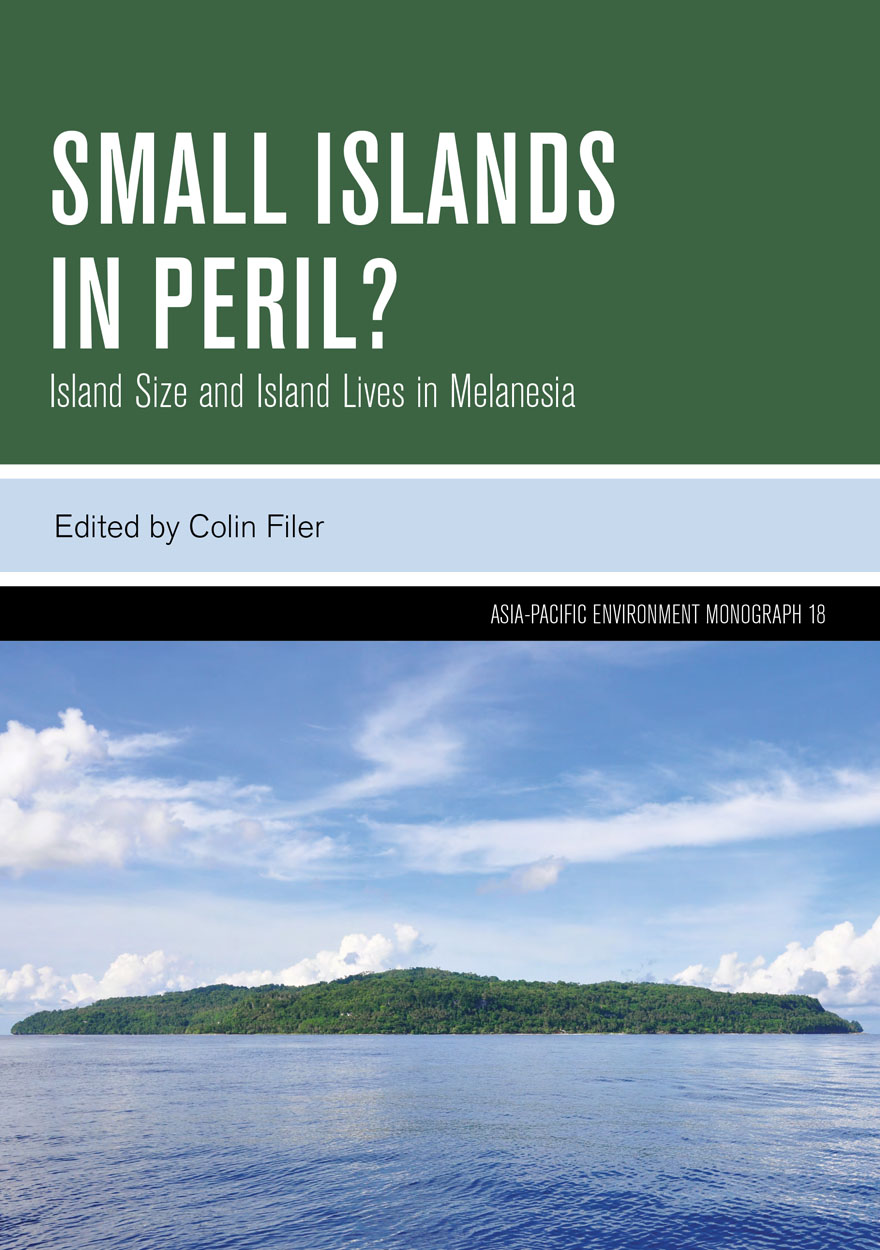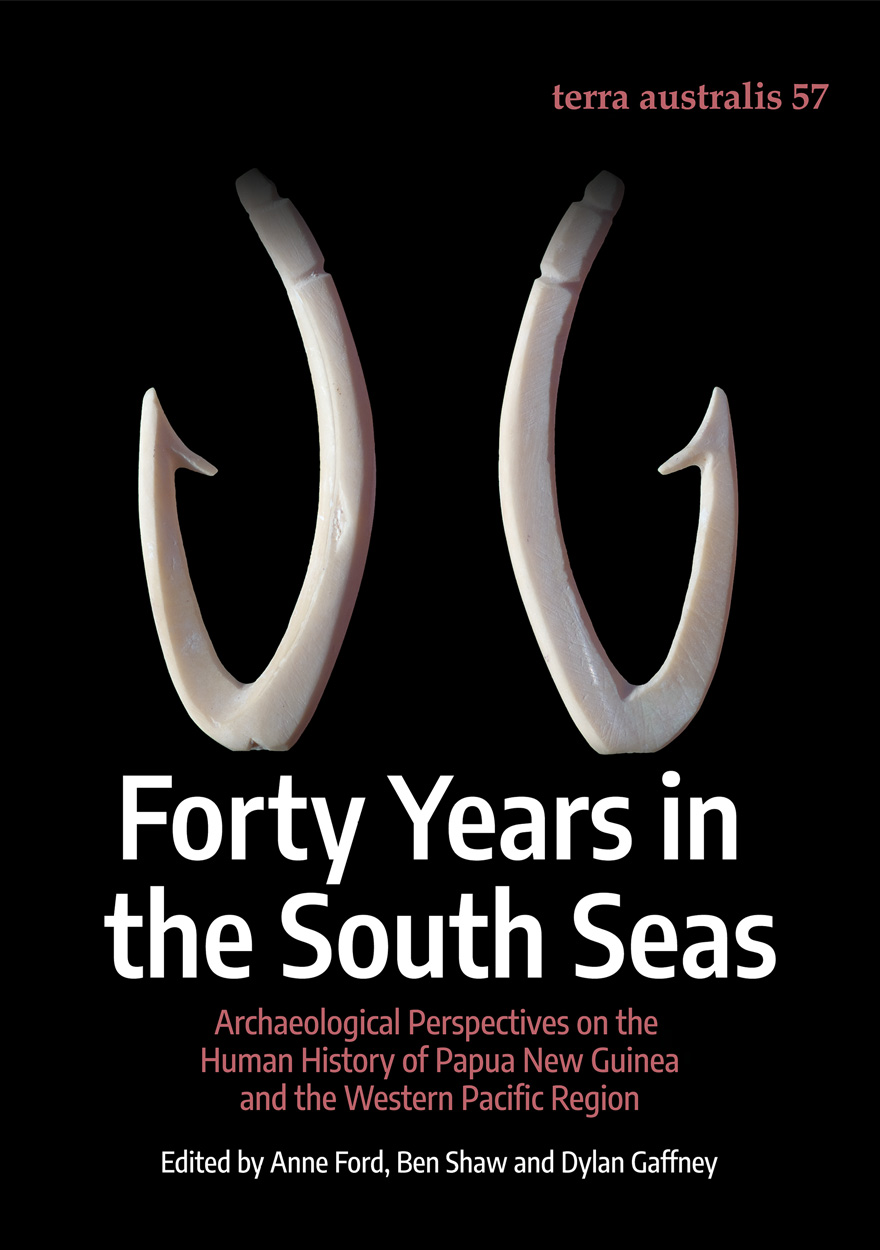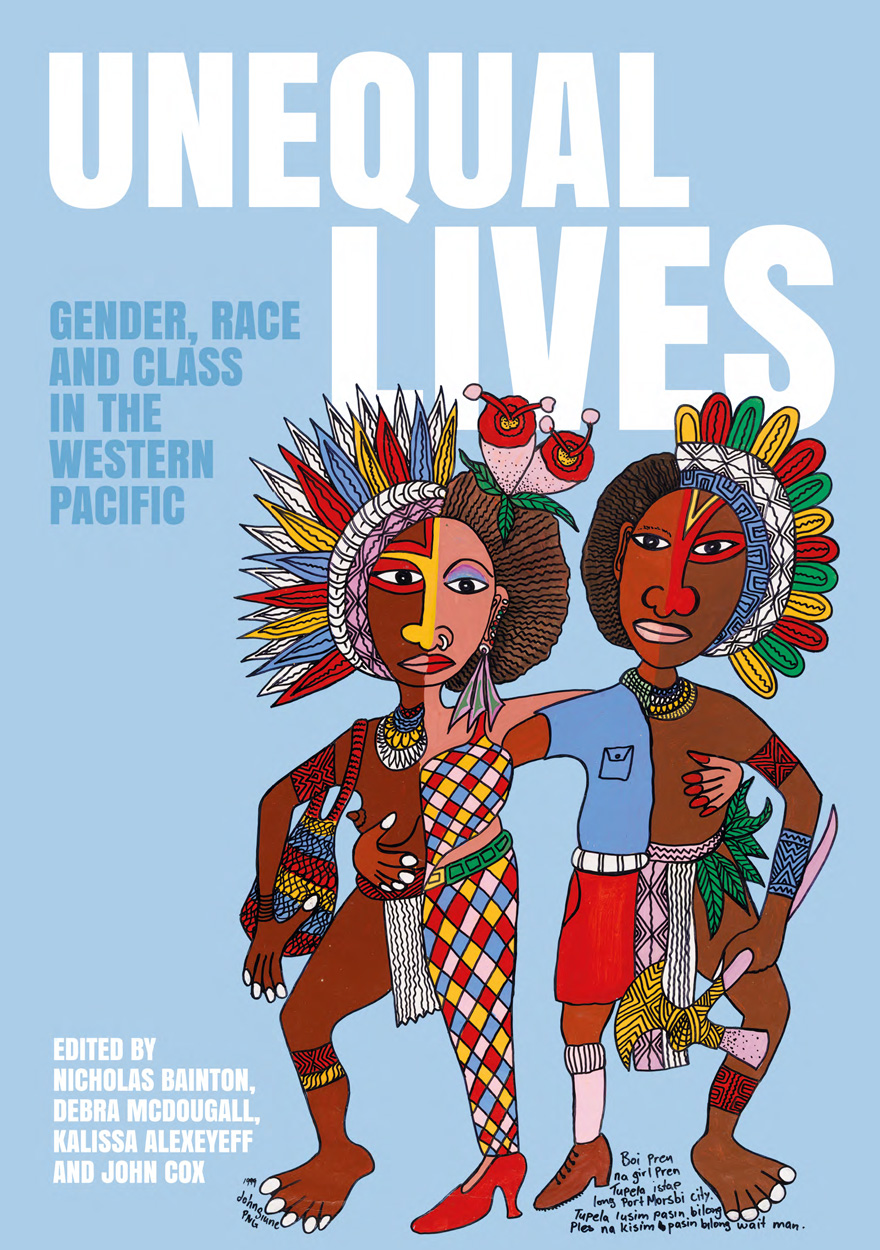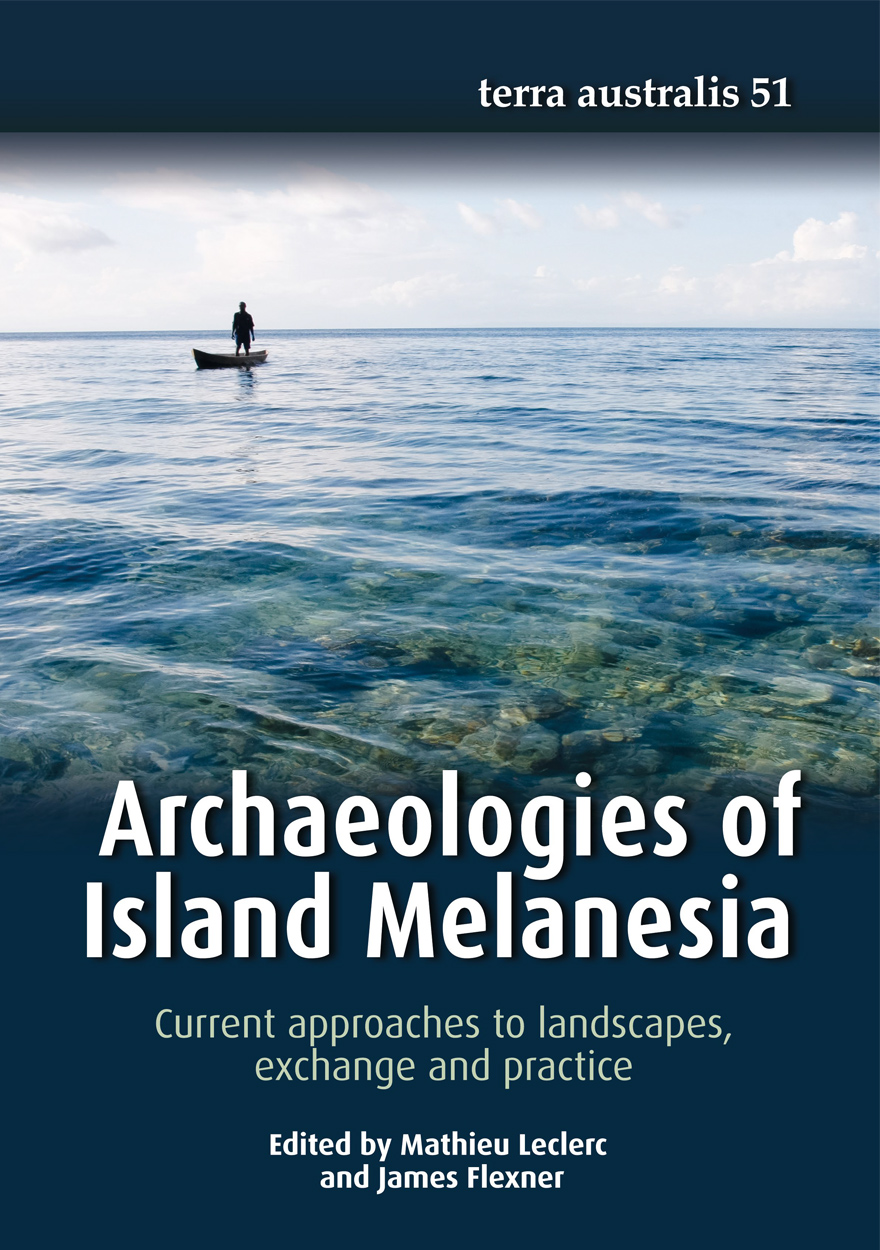Search titles
Displaying results 1 to 6 of 6.

Small Islands in Peril? »
Island Size and Island Lives in Melanesia
Edited by: Colin Filer
Publication date: July 2024
This book explores the idea that small island communities could be regarded as canaries in the coal mine of sustainable development because of scientific and anecdotal evidence of a common link between rapid population growth, degradation of the local resource base, and intensification of disputes over the ownership and use of terrestrial and marine resources. The authors are all anthropologists with a specific interest in the question of whether the economic and social ‘safety valves’ that have previously served to break some of the feedback loops between these trends appear to be losing their efficacy. While much of the debate about economy–society–environment relationships on small islands has been overtaken by a narrow focus on the problem of climate change, the authors show that there are many other factors at work in the transformation of island lives and livelihoods.

Forty Years in the South Seas »
Archaeological Perspectives on the Human History of Papua New Guinea and the Western Pacific Region
Publication date: May 2024
“This edited volume of invited chapters honours the four decades of fundamental research by archaeologist Glenn Summerhayes into the human prehistory of the islands of the western Pacific, especially New Guinea and its offshore islands. This area helped to shape and direct many ancient dispersal events associated with Homo sapiens, initially from Africa more than 50,000 years ago, through the lower latitudes of Asia, into Australia, New Guinea, the Bismarck Archipelago, and possibly the Solomon Islands.
Around 3000 years ago, coastal regions of northern and eastern New Guinea, and the islands of Melanesia beyond, played a major role in the Oceanic migrations of Austronesian-speaking peoples from southern China and Southeast Asia, migrations that have recently attained new levels of genetic complexity through the analysis of ancient DNA from human remains. For the first time, humans of both Southeast Asian and New Guinea/Bismarck genetic origin reached the islands of Remote Oceania, beyond the Solomons.
Many of the chapters in this book deal with archaeological aspects of this Austronesian maritime expansion (which never seriously impacted the populations of the New Guinea Highlands), especially as revealed through the analysis of Lapita pottery and associated artefacts. Other chapters offer archaeological perspectives on trade and exchange, and on related topics that extend into the ethnographic era.
The research of Glenn Summerhayes stands centrally amongst all these offerings, ranging from the discovery of some of the oldest traces of Pleistocene human settlement in Papua New Guinea to documentation of the remarkable phenomenon of Lapita expansion through Melanesia into western Polynesia around 3000 years ago. This volume is a fitting celebration of a remarkable career in western Pacific archaeology and population history.”
— Emeritus Professor Peter Bellwood, The Australian National University

The Federated States of Micronesia’s Engagement with the Outside World »
Control, Self-Preservation and Continuity
Authored by: Gonzaga Puas
Publication date: September 2021
This study addresses the neglected history of the people of the Federated States of Micronesia’s (FSM) engagement with the outside world. Situated in the northwest Pacific, FSM’s strategic location has led to four colonial rulers. Histories of FSM to date have been largely written by sympathetic outsiders. Indigenous perspectives of FSM history have been largely absent from the main corpus of historical literature. A new generation of Micronesian scholars are starting to write their own history from Micronesian perspectives and using Micronesian forms of history. This book argues that Micronesians have been dealing successfully with the outside world throughout the colonial era in ways colonial authorities were often unaware of. This argument is sustained by examination of oral histories, secondary sources, interviews, field research and the personal experience of a person raised in the Mortlock Islands of Chuuk State. It reconstructs how Micronesian internal processes for social stability and mutual support endured, rather than succumbing to the different waves of colonisation. This study argues that colonisation did not destroy Micronesian cultures and identities, but that Micronesians recontextualised the changing conditions to suit their own circumstances. Their success rested on the indigenous doctrines of adaptation, assimilation and accommodation deeply rooted in the kinship doctrine of eaea fengen (sharing) and alilis fengen (assisting each other). These values pervade the Constitution of the FSM, which formally defines the modern identity of its indigenous peoples, reasserting and perpetuating Micronesian values and future continuity.

Unequal Lives »
Gender, Race and Class in the Western Pacific
Publication date: January 2021
As we move further into the twenty-first century, we are witnessing both the global extensification and local intensification of inequality. Unequal Lives deals with the particular dilemmas of inequality in the Western Pacific. The authors focus on four dimensions of inequality: the familiar triad of gender, race and class, and the often-neglected dimension of generation. Grounded in meticulous long-term ethnographic enquiry and deep awareness of the historical contingency of these configurations of inequality, this volume illustrates the multidimensional, multiscale and epistemic nature of contemporary inequality.
This collection is a major contribution to academic and political debates about the perverse effects of inequality, which now ranks among the greatest challenges of our time. The inspiration for this volume derives from the breadth and depth of Martha Macintyre’s remarkable scholarship. The contributors celebrate Macintyre’s groundbreaking work, which exemplifies the explanatory power, ethical force and pragmatism that ensures the relevance of anthropological research to the lives of others and to understanding the global condition.
‘Unequal Lives is an impressive collection by Melanesianist anthropologists with reputations for theoretical sophistication, ethnographic imagination and persuasive writing. It brilliantly illuminates all aspects of the multifaceted scholarship of Martha Macintyre, whose life and teaching are also highlighted in the commentaries, tributes and interview included in the volume.’
— Robert J. Foster, Professor of Anthropology and Visual and Cultural Studies, Richard L. Turner Professor of Humanities, University of Rochester
‘Inspired by Martha Macintyre’s work, the contributors to Unequal Lives show that to theorise inequality is a measured project, one that requires rescaling its exercise over several decades in order to recognise the reality of inequality as it is known in social relations and to document it critically, unravelling their own readiness to misjudge what they see from the lives that are lived by the people with whom they have lived and studied. This fine volume shows how the ordinariness of everyday work and care can be a chimera wherein the apparent reality of inequality might mislead less critical reports to obscure its very account. From reading it, we learn that such unrelenting questioning of what makes lives unequal becomes the very analytic for better understanding lives as they are lived.’
— Karen M. Sykes, Professor of Anthropology, University of Manchester

Archaeologies of Island Melanesia »
Current approaches to landscapes, exchange and practice
Edited by: Mathieu Leclerc, James Flexner
Publication date: August 2019
‘The island world of Melanesia—ranging from New Guinea and the Bismarcks through the Solomons, Vanuatu, and New Caledonia—is characterised more than anything by its boundless diversity in geography, language and culture. The deep historical roots of this diversity are only beginning to be uncovered by archaeological investigations, but as the contributions to this volume demonstrate, the exciting discoveries being made across this region are opening windows to our understanding of the historical processes that contributed to such remarkably varied cultures. Archaeologies of Island Melanesia offers a sampling of some of the recent and ongoing research that spans such topics as landscape, exchange systems, culture contact and archaeological practice, authored by some of the leading scholars in Oceanic archaeology.’
— Professor Patrick Vinton Kirch Professor of Anthropology, University of Hawai‘i
Island Melanesia is a remarkable region in many respects, from its great ecological and linguistic diversity, to the complex histories of settlement and interaction spanning from the Pleistocene to the present. Archaeological research in Island Melanesia is currently going through a vibrant phase of exciting new discoveries and challenging debates about questions that apply far beyond the region. This volume draws together a variety of current perspectives in regional archaeology for Island Melanesia, focusing on Vanuatu, the Solomon Islands, New Caledonia and Papua New Guinea. It features both high-level theoretical approaches and rigorous data-driven case studies covering recent research in landscape archaeology, exchange and material culture, and cultural practices.

Echoes of the Tambaran »
Masculinity, history and the subject in the work of Donald F. Tuzin
Edited by: David Lipset, Paul Roscoe
Publication date: October 2011
In the Sepik Basin of Papua New Guinea, ritual culture was dominated by the Tambaran —a male tutelary spirit that acted as a social and intellectual guardian or patron to those under its aegis as they made their way through life. To Melanesian scholarship, the cultural and psychological anthropologist, Donald F. Tuzin, was something of a Tambaran, a figure whose brilliant and fine-grained ethnographic project in the Arapesh village of Ilahita was immensely influential within and beyond New Guinea anthropology. Tuzin died in 2007, at the age of 61. In his memory, the editors of this collection commissioned a set of original and thought provoking essays from eminent and accomplished anthropologists who knew and were influenced by his work. They are echoes of the Tambaran.
The anthology begins with a biographical sketch of Tuzin’s life and scholarship. It is divided into four sections, each of which focuses loosely around one of his preoccupations. The first concerns warfare history, the male cult and changing masculinity, all in Melanesia. The second addresses the relationship between actor and structure. Here, the ethnographic focus momentarily shifts to the Caribbean before turning back to Papua New Guinea in essays that examine uncanny phenomena, narratives about childhood and messianic promises. The third part goes on to offer comparative and psychoanalytic perspectives on the subject in Fiji, Bali, the Amazon as well as Melanesia. Appropriately, the last section concludes with essays on Tuzin’s fieldwork style and his distinctive authorial voice.



